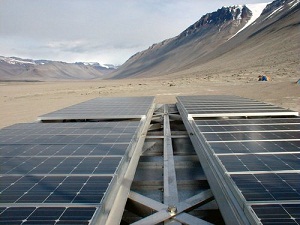Study: Large PV installations efficient in cloud cover
 As utilities get more serious about incorporating large amounts of photovoltaics (PVs) into the grid, they have some reservations about how cloud cover and weather will affect PVs.
As utilities get more serious about incorporating large amounts of photovoltaics (PVs) into the grid, they have some reservations about how cloud cover and weather will affect PVs.
The folks over at the Lawrence Berkeley National Laboratory recently issued “Implications of Wide-Area Geographic Diversity for Short-Term Variability of Solar Power,” a study published in early September 2010 refuting findings of earlier studies, which said that PV plants could be greatly affected by short-term events—like cloud cover, potentially limiting their practicality as a large-scale power generating source.
The new study, which measured PV array output in Oklahoma and Kansas concludes that the geographic diversity of large and/or distributed solar generating sites are “are not substantially different from the costs for managing the short-term variability of similarly sited wind in this region.” in other words, it shows that the effect of cloud cover and other temporary events didn’t have as great an effect on PV arrays as formerly thought.
Results of this research and research at the Sandia National Laboratories show that cloud-cover has a limited effect on large-scale PV plants come as California is approving plans for the world’s largest solar and PV plants.
“We focussed on PV and were interested in short-term [weather] fluctuation patterns. CSP [i.e., concentrated solar power] doesn’t usually have as much impact by rapidly passing clouds and other events,” he said. Since those technologies rely on heat, they buffer to a certain extent, the effect of cloud-cover naturally, whereas PVs may stop producing power completely when shaded.
“Clouds don’t pass over the earth all at one time,” noted Ryan Wise, a principle author and researcher of the study. “In large PV plants, you don’t see an instantaneous drop in large-scale power production, there’s geographic diversity within the plant itself.”
According to the study, the geographic diversity inherent in PV plants is similar to that in a wind farm, and similarly, while some parts of a large-scale PV plant may be shaded for a period of time, other parts of the plant aren’t and will continue to produce power.
“I think [the study] primarily helps utilities and electric system operators better understand how the higher penetration of solar” will affect the grid, Wise said. “The larger number of plants and the greater geographic diversity lowers the output fluctuation.”
He added that the study gives operators a “better understanding” of what the characteristics of large-scale PV systems look like as utilities begin to bring more PV plants online.



